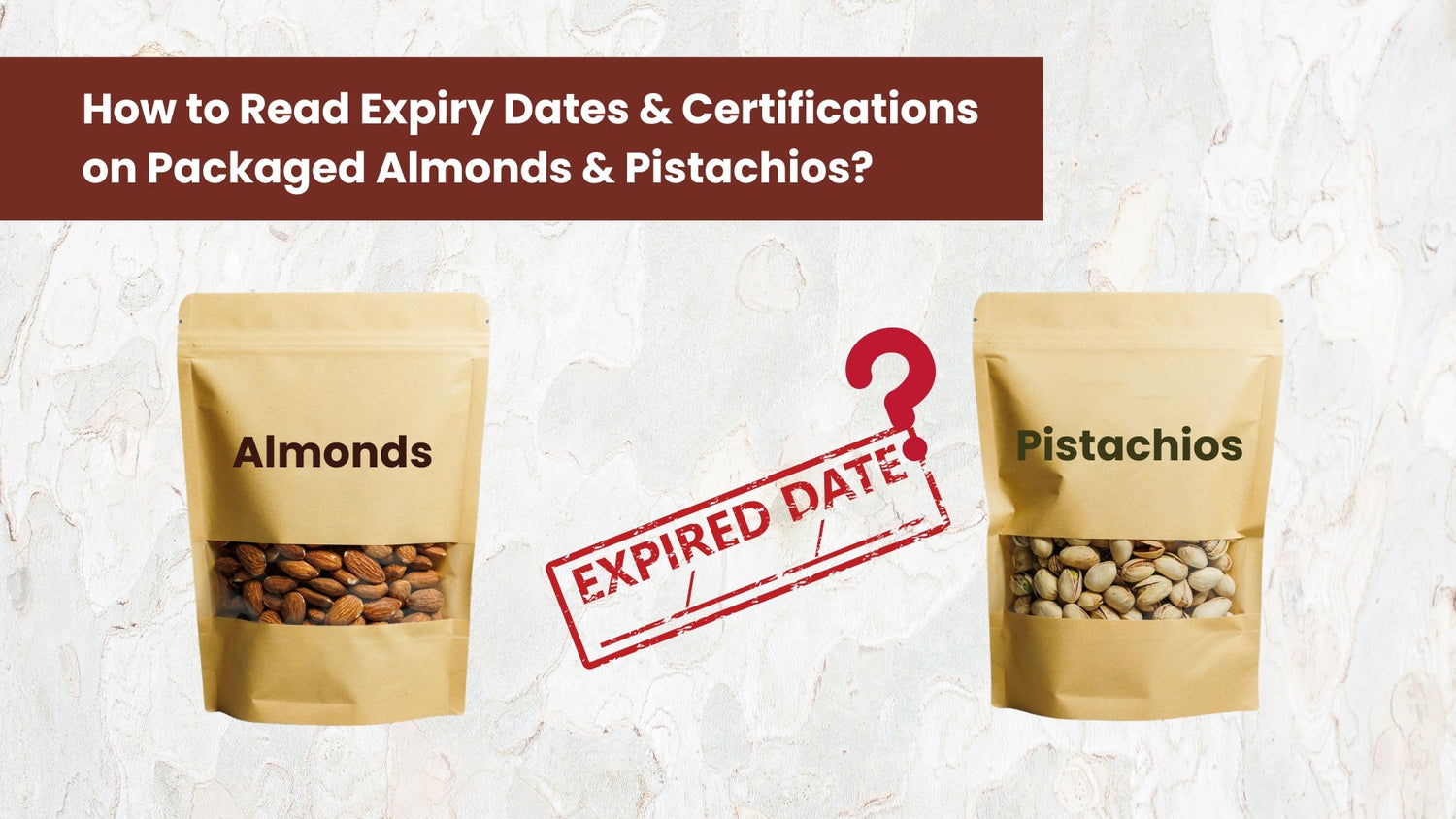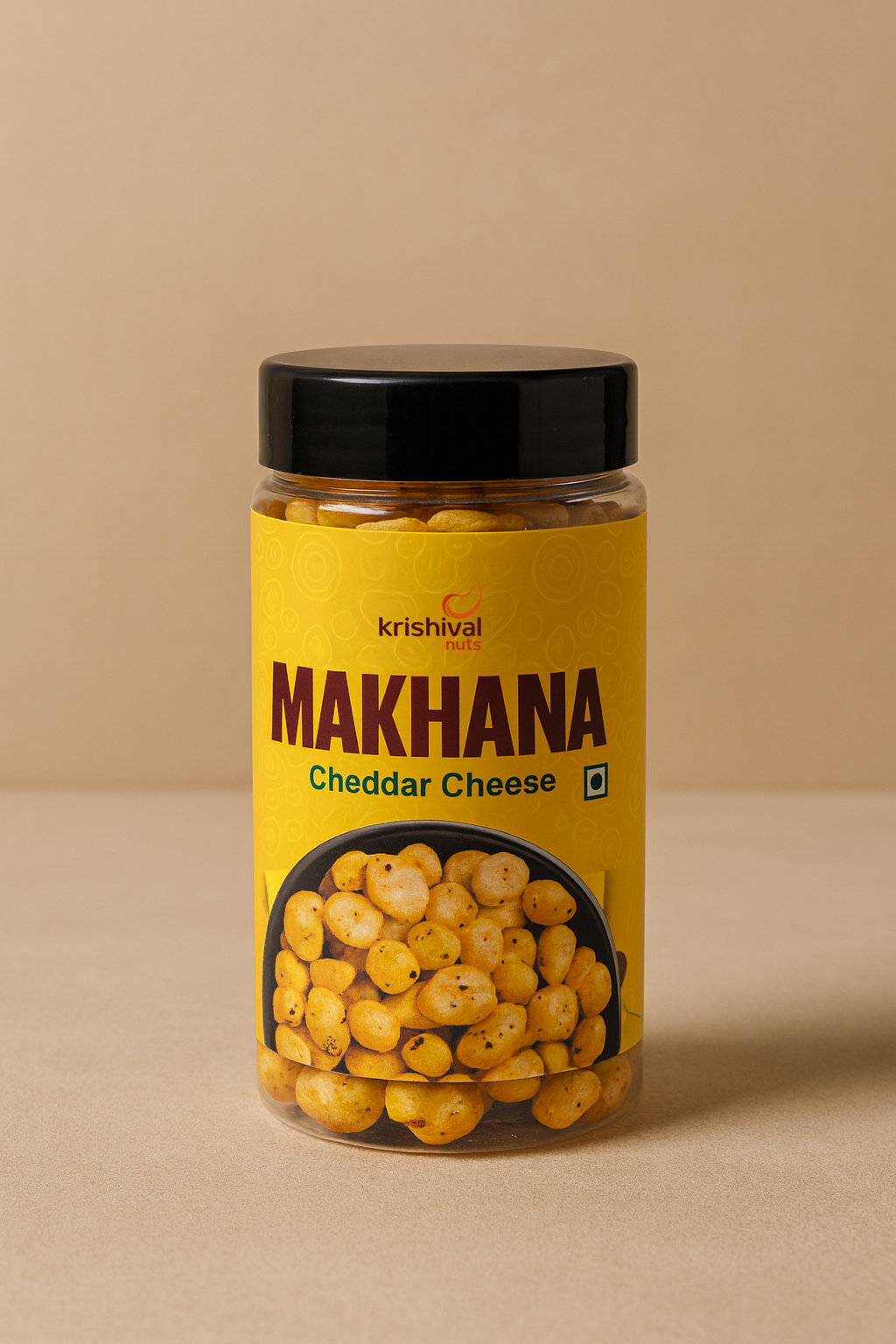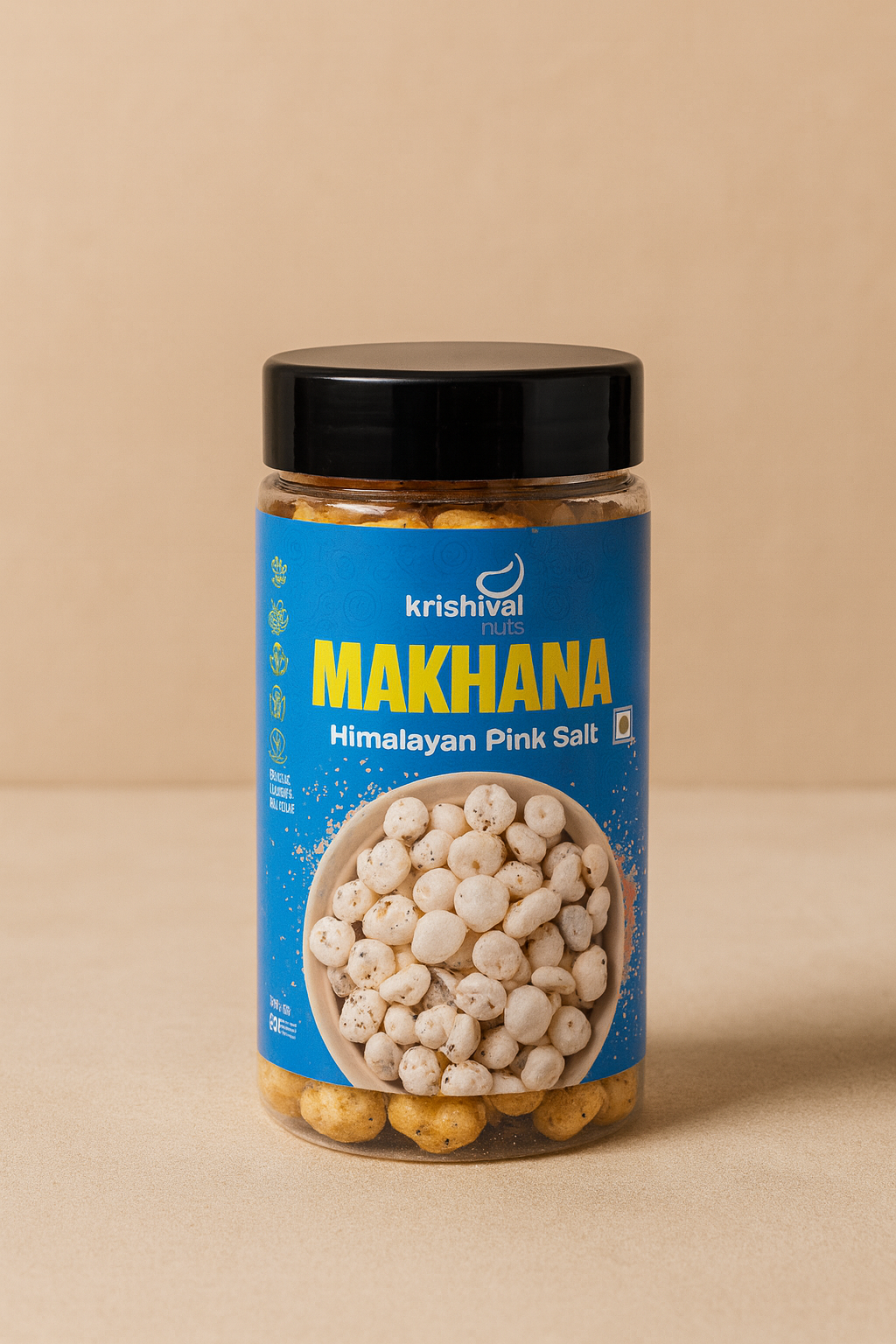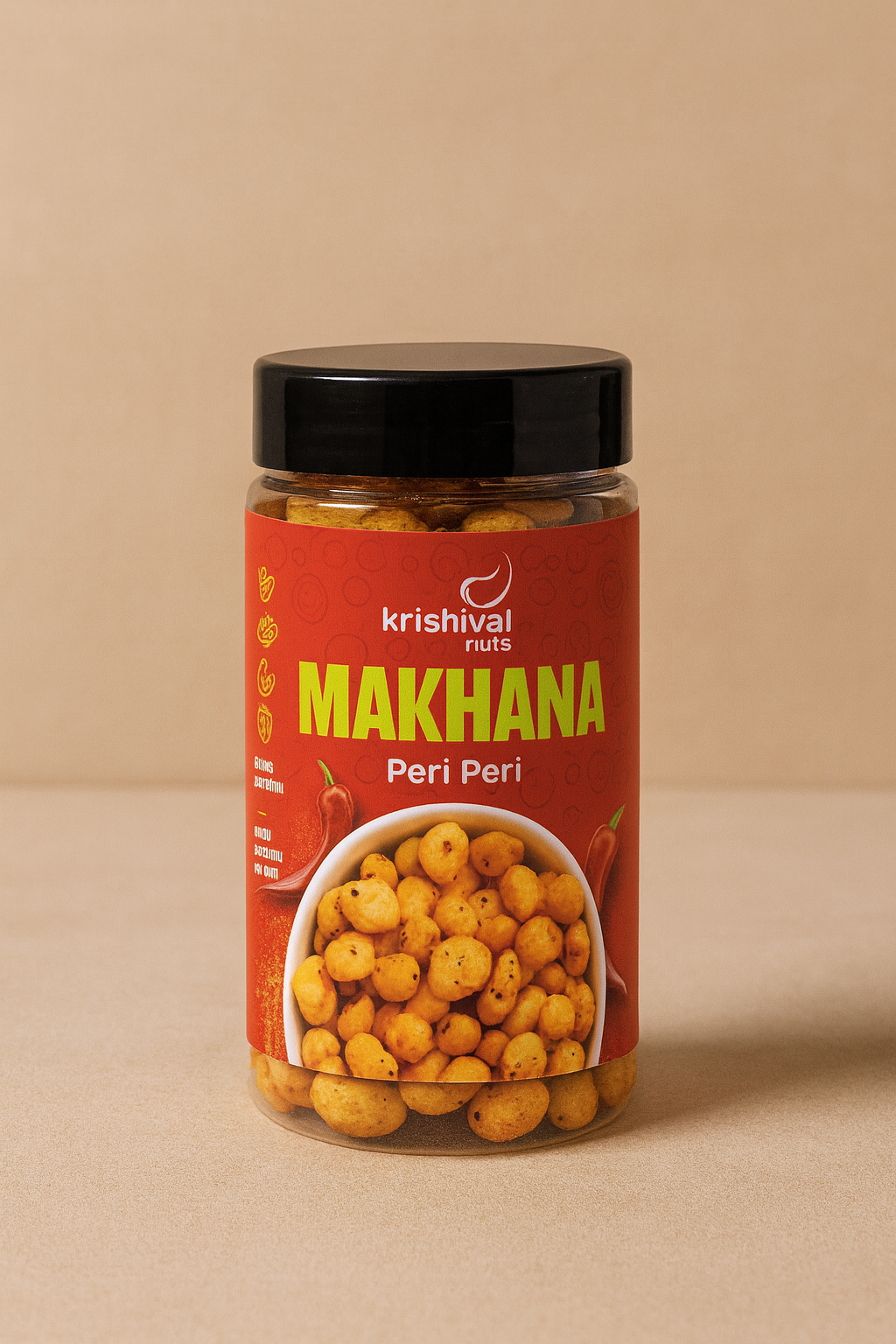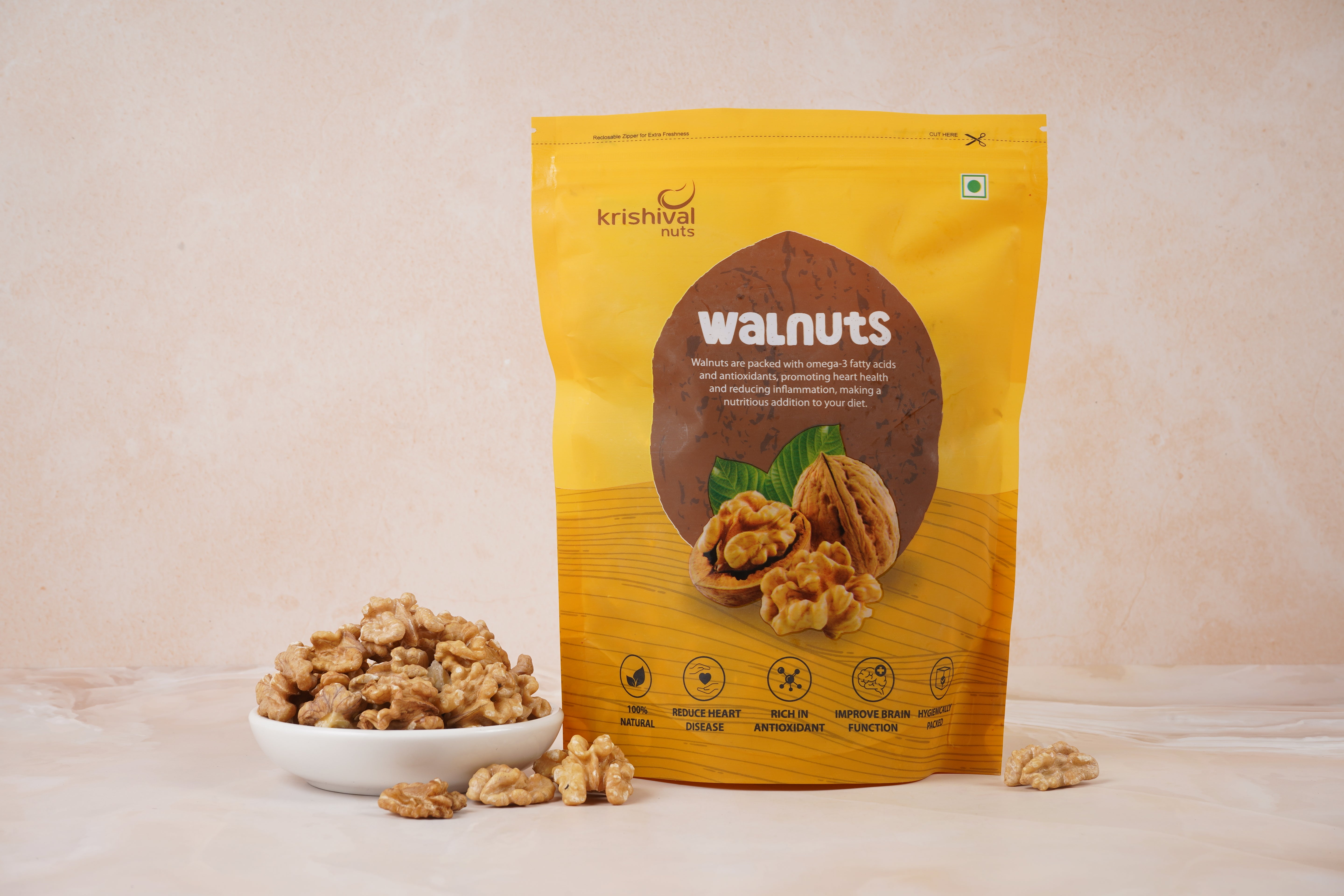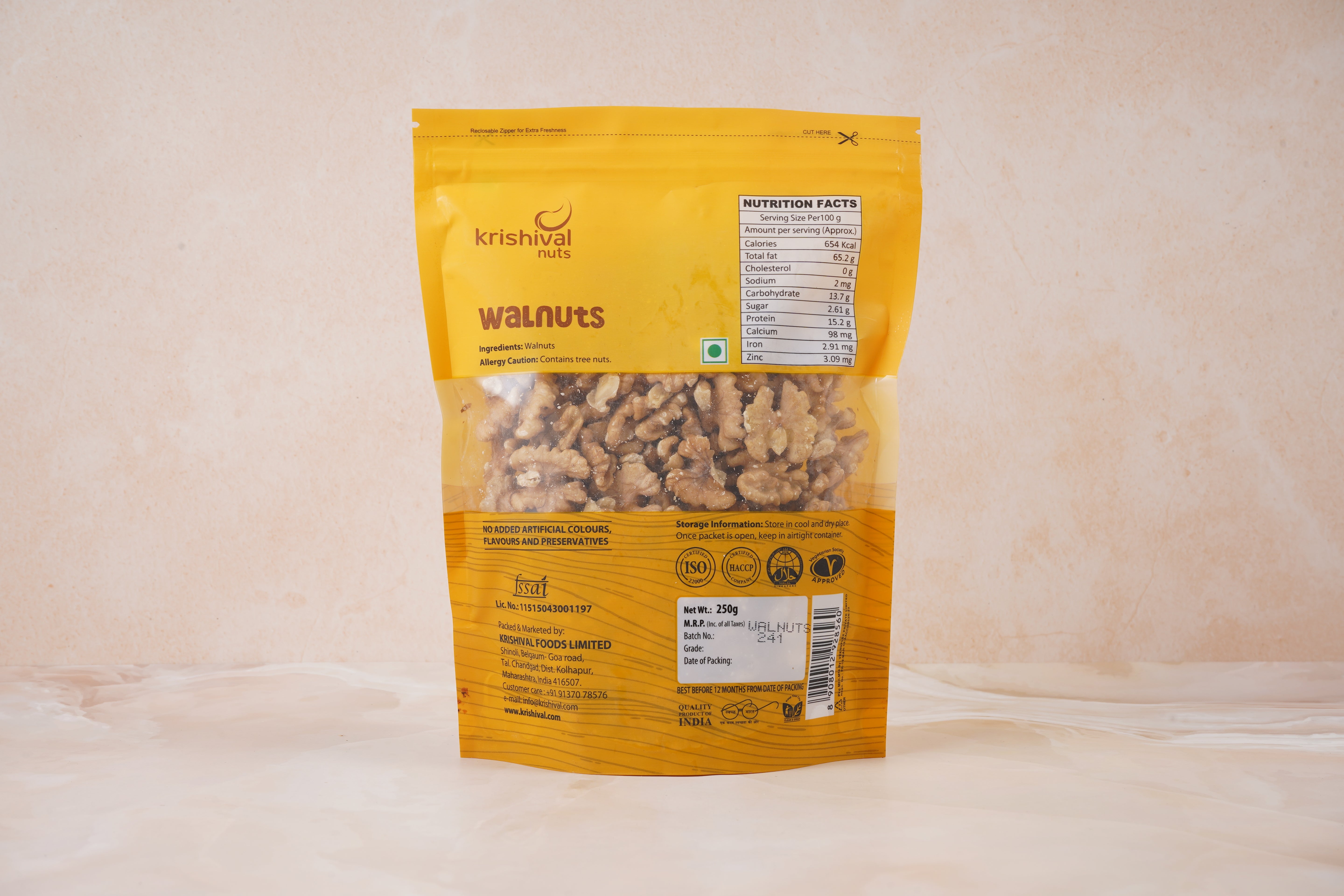When buying packaged almonds and pistachios, most consumers glance at the expiry date without giving it much thought. However, understanding these dates and the certifications on the packaging is crucial for ensuring quality, safety, and nutritional value. Expired or improperly stored nuts can lose their flavor, develop harmful mold, or even pose health risks due to rancidity.
This guide will help you decode expiry dates, batch codes, and certifications on nut packaging so you can make informed choices. You’ll learn how different date formats work, the significance of various food safety labels, and how to store nuts properly to extend their shelf life.
Why It’s Essential to Check Expiry Dates and Certifications on Packaged Nuts
Many people assume nuts have an indefinite shelf life, but almonds and pistachios can go bad if stored for too long or in poor conditions. Here’s why checking expiry dates and certifications matters:
1. Ensures Safety & Prevents Foodborne Illnesses
Nuts contain natural oils that can turn rancid over time, leading to an unpleasant taste and potential digestive issues. In worst cases, expired nuts may develop aflatoxins, a toxic byproduct of mold that has been linked to liver damage and cancer. Checking expiry dates helps you avoid consuming spoiled nuts.
2. Maintains Nutritional Value
Over time, stored nuts lose their nutritional potency. The longer almonds and pistachios sit on the shelf, the more their healthy fats, vitamins, and antioxidants degrade. Fresh nuts provide more health benefits compared to stale or expired ones.
3. Protects Against Fake or Low-Quality Products
With the rise of counterfeit and low-grade food products, certifications play a key role in verifying authenticity. Labels such as USDA Organic, FSSAI, and Non-GMO Project Verified indicate that the nuts have been tested for quality and safety. Understanding these certifications ensures you are buying genuine, high-quality products rather than substandard or mislabeled goods.
How Improper Storage and Outdated Products Impact Quality and Health
Even if nuts are within their expiry date, poor storage conditions can speed up spoilage and degrade their quality. Here’s how improper handling can impact almonds and pistachios:
1. Oxidation and Rancidity
When exposed to air, heat, and light, the natural oils in nuts start breaking down, causing an unpleasant, bitter taste. This process, known as oxidation, can occur even before the expiry date if the nuts aren’t stored correctly.
2. Mold & Aflatoxin Contamination
Nuts stored in humid conditions can develop mold, which produces aflatoxins. These toxins are odorless and tasteless but pose serious health risks, including:
-
Liver toxicity and cancer (long-term exposure).
-
Gastrointestinal issues like nausea and vomiting.
-
Weakened immunity due to toxin buildup in the body.
3. Texture & Flavor Changes
Poorly stored nuts often become stale, chewy, or too hard. Exposure to moisture may cause pistachios to lose their natural crunch, while almonds may become overly dry or rubbery. Stale nuts may still be safe to eat, but their taste and texture will be far from enjoyable.
4. Loss of Nutrients
Essential vitamins like Vitamin E and B-complex, along with antioxidants, break down when nuts are stored improperly or kept past their best-before date. This reduces their health benefits, making them less effective for heart health, brain function, and skin nourishment.
Understanding Expiry Dates on Almonds & Pistachios
Expiry dates on packaged almonds and pistachios help consumers determine freshness and quality. While nuts have a naturally long shelf life, exposure to air, moisture, and temperature fluctuations can impact their texture, flavor, and safety. Understanding different date labels, how expiry dates are determined, and how storage conditions affect longevity ensures that you consume these nuts at their best quality.
Best Before vs. Use By Dates: What Each Term Means
When buying packaged almonds and pistachios, you’ll typically see either a "Best Before" or "Use By" date on the label. While both indicate freshness, they serve different purposes:

Key Takeaways:
-
Best Before Date: More about quality than safety almonds and pistachios may still be edible past this date if stored correctly.
-
Use By Date: Found mainly on highly perishable foods; nuts rarely carry this label.
-
Storage Impact: Even before the expiry date, improper storage can cause nuts to turn rancid earlier than expected.
How Expiry Dates Are Determined: Industry Standards and Testing Methods
The expiry date on almonds and pistachios isn’t random—it is based on scientific testing and industry regulations. Food manufacturers follow rigorous processes to determine how long their products will remain fresh under standard storage conditions.
1. Stability Testing & Shelf-Life Analysis
Food companies conduct accelerated shelf-life testing (ASLT), where almonds and pistachios are stored at different temperatures and humidity levels to observe changes in:
-
Flavour and Aroma (sensory testing by food experts).
-
Texture & Crunchiness (moisture and oil content analysis).
-
Oxidation Levels (how fast the natural oils turn rancid).
-
Microbial Growth (checking for mold, bacteria, and fungi development).
2. Packaging Material & Its Impact
The type of packaging used plays a significant role in determining expiry dates:
-
Vacuum-Sealed & Nitrogen-Flushed Bags: Extend shelf life by reducing oxygen exposure.
-
Plastic Pouches & Resealable Bags: Offer moderate protection but don’t prevent oxidation entirely.
-
Glass & Tin Containers: Best for maintaining freshness if kept in a cool, dry place.
3. Regulatory Guidelines for Expiry Labeling
-
FSSAI (India): Requires "Best Before" or "Use By" dates on all packaged nuts.
-
FDA (USA): Does not mandate expiry dates on nuts, but manufacturers provide them as quality indicators.
-
EU Regulations: Enforce specific labeling laws for food safety compliance.
Food brands also perform consumer storage simulations, where they replicate real-life storage conditions (like a kitchen pantry or refrigerator) to determine the most realistic expiry period.
Does the Expiry Date Change After Opening?
Once you open a package of almonds or pistachios, the printed expiry date becomes less reliable. Exposure to air, humidity, and improper storage can accelerate spoilage, even if the original expiry date is still months away.
Factors That Reduce Shelf Life After Opening
-
Air Exposure: Nuts contain natural oils that oxidize when exposed to oxygen, leading to a stale or rancid taste.
-
Humidity & Moisture: High humidity causes nuts to absorb moisture, making them soggy and prone to mold.
-
Temperature Fluctuations: Frequent shifts between hot and cold environments (e.g., taking nuts in and out of the fridge) can degrade quality faster.
How to Extend Shelf Life After Opening

Tip: To maintain freshness, always reseal the package tightly or transfer the nuts to an airtight container. If you live in a humid climate, refrigeration is the best way to extend shelf life.
Understanding expiry dates and certifications on packaged almonds and pistachios helps you make informed purchasing decisions while ensuring you consume nuts at their peak quality. By knowing how these dates are determined and how they change after opening, you can store your nuts properly and avoid unnecessary food waste.
How to Read Manufacturing Codes on Nut Packaging
Understanding manufacturing codes on packaged almonds and pistachios helps consumers determine product freshness, track batch origins, and ensure they are purchasing a safe, high-quality product. These codes vary across brands and regions, but they follow specific industry standards.
Lot Numbers & Batch Codes: How to Decode Them
Lot numbers and batch codes are unique identifiers printed on packaging, typically found near the expiry date or on the back of the packet. These numbers help manufacturers track production runs, recall defective products, and maintain quality control.
Lot Number (LOT#) – A series of numbers and letters assigned to a particular production batch.
-
Example: LOT 240315A
-
24 → Year of production (2024)
-
03 → Month of production (March)
-
15 → Day of production (15th)
-
A → Internal code for batch identification
-
Batch Code (BATCH#) – Some brands use batch codes instead of lot numbers, following a similar format but sometimes adding supplier or location codes.
-
1023 → Internal tracking number
-
K01 → Processing facility or supplier ID
-
-
Example: BATCH 1023-K01
These codes are crucial for recalls or verifying the authenticity of products. If a brand issues a recall notice, checking your lot or batch number against official records ensures you are not consuming a compromised product.
Date Formatting Variations: Differences in Expiry Date Formats Across Brands & Regions
Manufacturers use different formats for expiry dates depending on country regulations and industry practices. Here are the most common variations:
1. MM/YYYY (Month/Year) – Common in India, Europe, and Australia
-
Example: MFD 10/2024 | BB 04/2025
-
MFD (Manufactured Date): October 2024
-
BB (Best Before): April 2025
2. DD/MM/YYYY (Day/Month/Year) – Common in Asia & Europe
-
Example: EXP: 30/06/2025
-
Expiry date: June 30, 2025
3. YYYY-MM-DD (Year-Month-Day) – Common in the USA & Canada
-
Example: EXP: 2025-06-30
-
Expiry date: June 30, 2025
4. Julian Date Codes – Used by Some US Manufacturers
-
Example: 23150
-
23 → Year (2023)
-
150 → Day of the year (150th day = May 30)
-
Meaning: Manufactured on May 30, 2023
Examples of Common Date Coding Formats
Different brands and manufacturers use unique date labeling styles. Below are a few real-world examples:

When purchasing packaged almonds or pistachios, understanding these codes ensures that you are consuming fresh and safe products. Always check for clear and legible labeling, and avoid buying products with smudged or unreadable date codes.
Certifications to Look for on Packaged Almonds & Pistachios
When buying packaged almonds and pistachios, checking for certifications ensures that the product meets safety, quality, and ethical standards. These certifications validate whether the nuts are free from harmful chemicals, genetically modified organisms (GMOs), and contaminants. Additionally, they provide assurance regarding ethical sourcing, sustainable farming, and compliance with health regulations. Below are the key certifications you should look for:
FSSAI (India) & FDA (USA) Compliance
FSSAI (Food Safety and Standards Authority of India)
In India, packaged food products, including almonds and pistachios, must comply with FSSAI regulations. The certification ensures that the nuts are:
-
Free from contaminants and toxins.
-
Processed and packaged under hygienic conditions.
-
Properly labelled with expiry dates, nutritional values, and batch codes.
To check if a brand is FSSAI-approved, look for the FSSAI logo and license number on the packaging. You can verify this number on the FSSAI website to confirm its authenticity.
FDA (Food and Drug Administration – USA)
In the United States, almonds and pistachios fall under the FDA’s Food Safety Modernization Act (FSMA), which regulates:
✅ Maximum allowable pesticide residues.
✅ Prevention of contamination during processing and packaging.
✅ Proper storage and transportation practices.
Packaged nuts in the U.S. often display an FDA-compliant label, but unlike FSSAI, the FDA does not issue a visible certification logo. Instead, brands registered with the FDA follow strict guidelines and undergo periodic inspections.
Organic Certifications
Organic certifications guarantee that the almonds and pistachios are grown without synthetic pesticides, artificial fertilizers, or genetically modified seeds. Here are the top three organic certifications to look for:
USDA Organic (United States)
The USDA Organic seal ensures that the nuts are:
-
Grown without synthetic pesticides or fertilizers.
-
Non-GMO and free from artificial preservatives.
-
Processed and packaged following organic handling standards.
Look for the green and white USDA Organic logo on packaging. Only products that meet stringent organic farming requirements receive this certification.
India Organic (Jaivik Bharat)
In India, the Jaivik Bharat and India Organic labels signify that almonds and pistachios comply with the National Program for Organic Production (NPOP). This certification ensures:
-
No chemical fertilizers or synthetic pesticides were used.
-
The product meets government-approved organic farming standards.
-
Transparency in organic sourcing and processing.
Consumers can verify Jaivik Bharat-certified products using the Food Safety Connect portal by entering the certification number.
EU Organic (European Union)
The EU Organic certification is similar to USDA Organic but follows the European Union's regulations. Nuts with this certification:
-
Contain at least 95% organic ingredients.
-
Are free from artificial additives and synthetic chemicals.
-
Comply with EU farming and processing standards.
The green leaf logo on European nut packaging indicates EU Organic certification.
Non-GMO & Gluten-Free Labels
Understanding Non-GMO Project Verified
The Non-GMO Project Verified seal guarantees that almonds and pistachios:
-
Are not genetically modified in any way.
-
Come from farms that follow strict GMO-free farming practices.
-
Have undergone independent verification to ensure compliance.
While almonds and pistachios are naturally non-GMO, this certification is particularly important if the product is flavored or processed with added ingredients that might contain genetically modified components.
Are Almonds and Pistachios Naturally Gluten-Free?
Yes! Both almonds and pistachios are naturally gluten-free. However, there are some considerations:
-
Cross-contamination can occur if nuts are processed in facilities that also handle gluten-containing grains.
-
Some flavored or coated varieties (e.g., honey-roasted almonds) may contain gluten.
-
Certified gluten-free nuts undergo independent testing to ensure they contain less than 20 ppm (parts per million) of gluten, making them safe for individuals with celiac disease or gluten sensitivity.
Look for the Certified Gluten-Free logo on packaging to be certain.
Fair Trade & Sustainable Farming Labels
Fair Trade Certified
The Fair Trade certification ensures that the almonds and pistachios:
-
Are sourced from farms that pay fair wages to workers.
-
Do not exploit child labor or engage in unethical farming practices.
-
Support community development programs in farming regions.
This certification is particularly important for pistachios sourced from developing countries, ensuring ethical business practices and environmental sustainability.
Rainforest Alliance Certified
While not as common in nut products as in coffee or chocolate, some almond and pistachio brands carry the Rainforest Alliance seal, which guarantees:
-
Sustainable water usage and reduced deforestation.
-
Environmentally friendly farming practices.
-
Ethical labor conditions for farm workers.
Sustainable farming certifications help support biodiversity while ensuring nut production does not harm ecosystems.
Halal & Kosher Certifications
Halal Certification
Halal-certified almonds and pistachios comply with Islamic dietary laws. The certification guarantees:
-
No animal-derived additives or processing agents.
-
No alcohol-based flavoring or preservatives.
-
Processing in halal-compliant facilities.
Look for recognized Halal certification logos, such as JAKIM (Malaysia), IFANCA (USA), or HCA (India).
Kosher Certification
Kosher-certified nuts comply with Jewish dietary laws. This certification ensures:
-
The product is free from non-kosher ingredients.
-
Processing and handling follow Kosher food preparation guidelines.
-
The equipment used to process the nuts is certified kosher.
Common Kosher certification symbols include:
-
OU (Orthodox Union)
-
KSA (Kosher Supervision of America)
-
Star-K
Kosher certification is particularly important for Jewish consumers observing dietary laws, but it is also recognized for maintaining high hygiene and food safety standards.
Why Expiry Dates Matter: The Science Behind Nut Spoilage
Almonds and pistachios may seem like they last forever, but they do have a limited shelf life. Ignoring expiry dates or improper storage can lead to spoilage, affecting both taste and safety. Unlike processed foods that contain preservatives, nuts are naturally high in oils, which makes them prone to oxidation and rancidity over time.
Understanding how nuts spoil and recognizing the warning signs can help you enjoy them at their best while avoiding potential health risks.
What Happens to Nuts Over Time?
Nuts undergo chemical and physical changes as they age. Even if they look fine at first glance, their internal structure and composition can deteriorate.
1. Oxidation and Rancidity Process
Almonds and pistachios contain healthy fats, primarily monounsaturated and polyunsaturated fats. However, these fats are sensitive to oxygen, light, and heat.
-
When exposed to air, nuts undergo oxidation, breaking down the fatty acids.
-
This leads to rancidity, where the nuts develop an unpleasant odor and taste.
-
Rancid nuts not only taste bad but may also produce harmful free radicals, which can be harmful if consumed regularly.
The process speeds up in warm and humid environments, which is why proper storage is crucial.
2. Changes in Texture and Flavor
Over time, almonds and pistachios lose moisture and may become:
-
Hard and overly dry (making them difficult to chew).
-
Rubbery or stale (especially in humid conditions).
-
Chewy or sticky (if they have absorbed moisture from the air).
As nuts age, their flavor changes too. Instead of a rich, nutty taste, expired almonds and pistachios may develop a bitter, soapy, or stale flavor.
Signs That Your Almonds & Pistachios Have Expired
It’s not always easy to tell if nuts have gone bad just by looking at them. Here are some simple tests to check their freshness:
1. Smell Test (Rancid or Sour Odor)
Fresh nuts should have a mild, nutty aroma.
Expired nuts develop a sour, musty, or paint-like smell due to rancidity.
2. Taste Test (Bitter or Soapy Flavor)
Fresh almonds and pistachios have a naturally sweet and nutty taste.
Rancid nuts taste bitter, metallic, or slightly soapy.
Even if they pass the smell test, tasting a small piece is the best way to confirm freshness. If the flavor is off, spit it out and discard the rest.
3. Visual Signs (Mold, Discoloration, Shriveling)
-
White or green mold spots: A clear sign of spoilage due to moisture exposure.
-
Dark or yellowish patches: May indicate oxidation or contamination.
-
Shriveled or excessively dry nuts: A sign that they are old and stale.
Important: Do not attempt to remove mold and eat the remaining nuts. Mold spores spread deep inside, and consuming contaminated nuts can cause food poisoning or allergic reactions.
Storage Tips to Extend Freshness
Proper storage can extend the shelf life of almonds and pistachios, keeping them fresh for longer. Follow these tips to prevent oxidation, moisture absorption, and contamination.
1. Ideal Temperature & Humidity Levels
-
Pantry storage: Keep in a cool, dark place (below 25°C) with low humidity.
-
Refrigeration: Extends freshness significantly, especially in humid climates.
-
Freezing: The best method for long-term storage—keeps nuts fresh for up to 2 years.
2. Proper Packaging for Long-Term Storage

Best Storage Containers:
-
Airtight glass jars: Prevents moisture and odor absorption.
-
Vacuum-sealed bags: Ideal for long-term storage, prevents oxidation.
-
Resealable zipper bags: Convenient for short-term use.
Avoid:
-
Plastic bags without proper sealing (prone to moisture absorption).
-
Storing near heat sources like stoves or ovens (accelerates spoilage).
Case Studies & Real-Life Examples
Understanding the impact of expiry dates and certifications on packaged almonds and pistachios requires real-world examples. Here are three case studies that highlight the importance of checking labels, verifying certifications, and ensuring proper storage.
A Consumer Report on Expired Almonds: How Someone Experienced Food Poisoning from Outdated Nuts
Background:
In 2023, a consumer in Mumbai purchased a discounted bulk pack of almonds from a local grocery store. The packaging displayed a "Best Before" date of March 2023, but the consumer bought them in September 2023, assuming they were still safe since they were dry nuts.
Incident:
After consuming a handful of almonds, the individual experienced severe stomach pain, nausea, and diarrhea within a few hours. Upon closer inspection, the almonds had a slightly bitter and soapy taste, indicating rancidity. The consumer later discovered faint white specks on some of the nuts, which were signs of mold growth due to improper storage.
Investigation & Findings:
-
Rancid almonds can cause food poisoning due to the breakdown of natural oils, which leads to the formation of harmful compounds.
-
Mold growth on nuts may contain aflatoxins, a toxic substance produced by fungi that can cause liver damage if consumed in large amounts.
-
The store had stored the nuts in non-airtight plastic bags at room temperature for months, leading to oxidation and spoilage.
-
The absence of a proper certification mark (e.g., FSSAI, FDA) raised concerns about product authenticity.
Key Takeaways:
-
Always check expiry dates and packaging condition before purchasing nuts, especially discounted ones.
-
A bitter or stale taste is an early warning sign that nuts have gone bad.
-
Proper storage (airtight containers, cool conditions) significantly extends shelf life and prevents spoilage.
-
Buying from reputable brands with clear certification labels reduces the risk of consuming expired or low-quality products.
A Market Analysis of Shelf Life: Comparing Storage Conditions in Different Climates
Objective:
To determine how climate affects the shelf life of packaged almonds and pistachios, a study was conducted in three regions with distinct temperature and humidity conditions. The nuts were stored in three different environments:
-
Cold & Dry (Refrigeration – 5°C, 30% humidity)
-
Warm & Humid (Room temperature – 30°C, 70% humidity)
-
Hot & Dry (Storage in a sealed container – 40°C, 20% humidity)
Findings:

Key Insights:
-
Cold storage extends nut freshness significantly, preventing rancidity and mold growth.
-
High humidity accelerates spoilage by increasing moisture absorption, which leads to mold formation.
-
Heat speeds up oxidation, causing nuts to become bitter and lose their natural crunch.
Conclusion:
To maximize shelf life, almonds and pistachios should be stored in airtight containers in a cool, dry place—preferably in a refrigerator for long-term preservation. Avoid leaving nuts in humid environments, as they spoil much faster.
Brand A vs. Brand B: A Comparison of Expiry Date Reliability and Certification Transparency
Overview:
A comparison was conducted between two well-known packaged nut brands—Brand A (a premium, certified organic brand) and Brand B (a budget-friendly, lesser-known brand). The focus was on expiry date accuracy, certification transparency, and packaging quality.
Key Factors Compared:

Findings:
-
Brand A’s certification transparency reassured consumers about product quality, while Brand B lacked verifiable certifications.
-
Brand A’s vacuum-sealed packaging preserved freshness longer, while Brand B’s loose plastic packaging allowed oxidation.
-
Brand A provided clear expiry date details with both manufacturing and expiry dates, while Brand B only had a "Best Before" label without further information.
-
Consumers reported better taste and texture with Brand A’s almonds and pistachios, whereas Brand B’s nuts were found to go rancid sooner.
Final Verdict:
Consumers should prioritize brands that provide clear expiry date labeling, proper certifications, and high-quality packaging. Spending a little extra on a trusted, well-packaged product can significantly improve freshness and safety.
Key Takeaways from These Case Studies
-
Ignoring expiry dates can lead to food poisoning and health risks. Always check labels before purchase.
-
Storage conditions matter. Nuts last much longer in cool, dry environments compared to warm, humid ones.
-
Not all brands follow strict labeling and certification practices. Opt for brands that clearly indicate manufacturing and expiry dates with verifiable certifications.
-
Proper packaging is crucial. Airtight, vacuum-sealed packaging helps maintain freshness longer than loose plastic packaging.
-
Buying from reliable brands ensures safer consumption. Avoid unknown or uncertified products that may compromise quality and safety.
By applying these insights, consumers can make more informed decisions when purchasing and storing packaged almonds and pistachios.
How to Verify Certification Authenticity Before Buying
With the increasing number of food fraud cases, verifying certification authenticity before buying packaged almonds and pistachios is crucial. Here are three reliable ways to ensure the nuts you purchase meet quality and safety standards.
1. Checking Online Databases (e.g., FSSAI License Lookup, USDA Organic Database)
Many food regulatory authorities provide online portals where consumers can verify certifications. Before purchasing, check whether the brand’s certification is legitimate by searching for their registration number.
-
FSSAI License Lookup (India):
-
Visit the FSSAI Food License Portal (https://foodlicensing.fssai.gov.in/cmsweb)
-
Enter the FSSAI number (usually printed on the packaging) to verify its validity.
-
USDA Organic Integrity Database (USA):
-
Go to the USDA Organic Integrity Database (https://organic.ams.usda.gov/integrity/)
-
Search for the brand name or certification number to confirm organic status.
-
EU Organic Certification Database:
-
Visit ec.europa.eu and enter the organic certification code to check legitimacy.
-
Other Global Databases:
-
Canada Organic Regime, Non-GMO Project, Halal, and Kosher certification websites also allow verification.
Tip: If a brand’s certification number is missing or does not match the database records, avoid purchasing the product.
2. Scanning QR Codes on Packaging (How Some Brands Provide Real-Time Authentication)
Many brands now include QR codes on their packaging, which can be scanned to verify product authenticity.
-
How It Works:
-
Open your smartphone’s camera or a QR scanner app.
-
Scan the QR code printed on the packaging.
-
You should be redirected to the brand’s official website or certification authority, displaying product details, certification status, and batch authenticity.
-
What to Look For in a Verified QR Code Scan:
-
Manufacturer details, license numbers, and certification status.
-
Expiry and manufacturing dates matching the printed packaging.
-
A genuine verification link (avoid redirected or suspicious URLs).
Warning: If scanning the QR code leads to a non-official website or displays "verification unavailable," the certification could be fake.
3. Cross-Checking Batch Numbers on Manufacturer Websites
Some premium brands allow consumers to verify the product’s authenticity using batch numbers. The batch number is a unique identifier printed on the packaging.
-
Steps to Verify a Batch Number:
-
Visit the official website of the brand.
-
Look for a batch verification page (usually under "Product Authenticity" or "Verify Your Product").
-
Enter the batch number found on the package.
-
The system will confirm whether the product is genuine and safe for consumption.
-
Examples of Brands Providing Batch Verification:
-
California Almonds allows customers to check batch traceability.
-
Pistachio Growers Associations offer online tracking for their packaged products.
-
Premium Organic Nut Brands provide batch authenticity checks for food safety assurance.
If a batch number cannot be verified, consider reporting it to consumer protection authorities.
Conclusion
-
Always verify expiry dates and certifications before purchasing packaged almonds and pistachios.
-
Use online databases and QR code scans to ensure that the product is genuine and meets safety standards.
-
Avoid products with unclear labeling, missing certification numbers, or unverifiable batch details.
-
Storage conditions significantly impact freshness. Proper storage helps extend shelf life and prevent spoilage.
-
Buying from trusted brands ensures better quality, transparency, and safety.
By following these steps, consumers can protect themselves from counterfeit or expired products and make more informed purchasing decisions.
FAQs
Q1. What happens if I eat expired almonds or pistachios?
Eating expired nuts may lead to digestive issues, including nausea, stomach cramps, and diarrhoea. Rancid almonds and pistachios contain oxidized oils, which can produce harmful compounds. In severe cases, expired nuts contaminated with mold can cause aflatoxin poisoning, which poses liver health risks.
2. Are best-before and use-by dates legally enforceable?
This depends on the country:
-
Best-before dates indicate quality rather than safety and are not legally binding in most regions.
-
Use-by dates are stricter and legally enforceable in the USA, EU, and India for perishable products.
For almonds and pistachios, the best-before date is a guideline rather than a safety regulation.
3. Do vacuum-sealed nuts last longer?
Yes, vacuum-sealed packaging significantly extends shelf life by removing oxygen, which slows down oxidation and rancidity.
-
Vacuum-sealed almonds can last up to 24 months.
-
Regular packaged nuts last only 6–12 months before signs of spoilage appear.
For long-term storage, keep vacuum-sealed nuts in a cool, dry place or refrigerate them.
4. Can I remove mold from nuts and eat the rest?
No. Mold on nuts can release invisible toxins (aflatoxins) that penetrate deep inside. Even if mold is scraped off, toxins may still be present. Discard any moldy nuts immediately to avoid food poisoning.
5. Are there apps to check food expiry dates and certifications?
Yes, some apps help verify product details, including:
-
SmartLabel (USA) – Scans barcodes to check expiry dates and certifications.
-
FoodKeeper (Global) – Provides storage guidelines and expiry tracking.
-
FSSAI Food Safety Connect (India) – Verifies FSSAI certification and safety alerts.
These apps can help ensure that the nuts you purchase are fresh and properly certified.
6. How can I tell if an organic certification is fake?
To confirm the authenticity of an organic certification:
-
Check the certification number on the official regulatory website.
-
Look for QR codes on the packaging that link to verification portals.
-
Genuine organic products will have clear, traceable certification details from USDA Organic, EU Organic, or India Organic databases.
If a certification cannot be verified, it is likely fake.
7. Is it safe to eat nuts past their best-before date?
If stored properly, nuts may still be safe beyond the best-before date, but:
-
Check for rancid smell or bitter taste—signs of spoilage.
-
If the nuts were stored in a cool, airtight environment, they may remain edible for several months past the date.
-
If any mold or off-flavors are present, discard them immediately.
8. Why do some brands have longer shelf lives than others?
Shelf life varies due to:
-
Processing methods: Pasteurized nuts last longer than raw nuts.
-
Packaging quality: Vacuum-sealed packaging extends freshness.
-
Storage conditions: Nuts stored in humidity-controlled environments remain fresh longer.
-
Added preservatives: Some brands use antioxidants like Vitamin E to slow oxidation.
Premium brands often use better storage technology, ensuring a longer shelf life.
9. Should I store almonds and pistachios together?
It’s best to store them separately to prevent:
-
Flavor transfer: Pistachios have a stronger aroma that can affect almonds.
-
Moisture imbalance: If one type absorbs moisture, it can spoil the other faster.
-
Cross-contamination risks: If one batch goes bad, the other may be affected.
Use airtight containers to maintain freshness.
10. Do roasted nuts expire faster than raw ones?
Yes. The roasting process breaks down natural oils, making nuts more prone to oxidation.
-
Raw almonds and pistachios last 12-24 months.
-
Roasted nuts last only 6-12 months before turning rancid.
For longer shelf life, store roasted nuts in an airtight container in the refrigerator.

